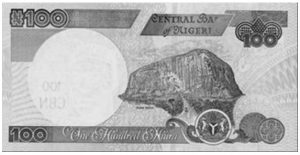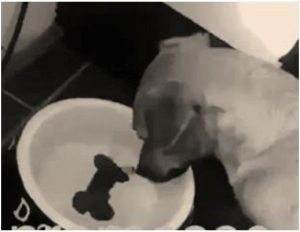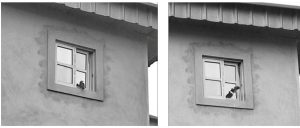
International Journal of General Studies (IJGS), Vol. 2, No. 3, October-December 2022, https://klamidas.com/ijgs-v2n3-2022-02/ |
||
|
Existence of Spatial-Alignment and Optical Illusions in the Built-Environment by Anselm E. O. Eneh and Bright Inekwe* . Abstract This paper is the outcome of studies of spatial-alignment and optical illusionary occurrences in the built environment. The authors carried out literature reviews on optical illusions as they affect humans, dogs and birds while they go about their daily activities. The methodology employed encompassed visual survey, review of journals, photographs and internet downloads. The android camera was used as a research instrument. Case studies conducted include the effects of spatial-alignment illusion on traffic along the Kaduna-Abuja expressway, around the Zuma Rock in Suleja; optical illusion on a dog attempting to eat a bone painted at the base of a white porcelain dish half-filled with water and an optical illusion on a bird observing itself on a tinted window pane in a residential building at Zango Shanu, Samaru, Zaria. After analysing the studies, the paper concludes that illusions affect the brains of both humans and animals alike. Keywords: built-environment, existence, illusions, optical, spatial-alignment. INTRODUCTION The Environment The environment is composed of two elements: the natural and the built environments. Everything that is not human-made; land, air, water, plants and animals all comprise the natural environment (Toppr.com, 2022; Mondal, 2022). The built environment is the man-made environment when the natural environment has been altered and modified by humans according to their needs. The environment regulates the life of the organisms including human beings but humans interact with the environment more vigorously than other living beings. Illusions Illusions distort one’s senses. Most illusions tend to deceive the eyes, ears and skin, while there are some illusions that may distort perception due to changes in internal body structures. The three main types of illusion include optical, auditory and tactile illusions (Cleareyes.com, 2013). Optical illusion, in which spatial alignment falls into, is covered in this study. Illusions can occur for many reasons, such as the effect of light on an object, insufficient sensory information about an object or errors in an individual’s processing of sensory details (Goodtherapy.org, 2016). Although humans, and other animals with forward facing eyes, may use a number of monocular cues, such as converging lines, occlusion, and texture gradient, to assess distances of objects in their environment, they are thought to depend primarily on binocular disparity for depth perception (Wolfe et al., 2012). Animals with eyes located on the sides of their heads have limited binocular vision, suggesting that they must rely, more heavily, on monocular visual cues to determine how far away objects are. This paper investigated two aspects of optical illusions; spatial-alignment and refractive/reflective illusions. They all occur because the perceptions of the images given to the brain do not measure up. According to Science Daily (2015), researchers from Georgia University, USA, indicated that monkeys perceive visual illusions in the same way great apes and humans see them. They perceive and misperceive the world similarly, which reflects resemblances in these species’ perceptual systems and their interpretation of their physical worlds. Capuchin and rhesus monkeys, like humans, classified dots presented inside large rings as small more often than the same-sized dots presented inside small rings. This showed that the context created by the ring, which was supposed to be ignored, generated a visual illusion. This statement is important to indicate that humans are not entirely on a world of their own, when illusions are discussed. LITERATURE REVIEW Optical Illusions on Humans, Monkeys and Apes Collins Dictionary (2021) defines optical illusion as something that tricks the eyes so that what is seen is different from what is really there, an illusion resulting from certain visual effects that cause a viewer to misunderstand or misinterpret what is actually seen. Spatial-alignment Illusion A spatial-alignment illusion occurs, according to Scocchia et al. (2017), between an observer and an object when there is an element of alignment between them which are actually temporal due to the position of the observer. The alignment or illusion starts to disappear as the observer starts to change position and approach the obstacle due to change of motion or manner of movement. The spatial-alignment is therefore temporal, subjective, incomplete or an illusion. Most of the elements of spatial alignment come from changes in the terrain of lineal alignment of infrastructures like power lines, roads, rail lines and so on with respect to an object or obstruction. The observer may approach stationary objects like rocks, lakes or other obstacles but the path of movement veers off as the observer gets closer to the obstacle. An observer may see the objects or infrastructure as a continuous one because of one landform or the other, especially hills, bends and so on, which obstruct a complete comprehension of the details of the alignment of the infrastructure. Complete facts are known as the observer approaches the obstacle to discover that the construction or installation deviates from the obstacle with the change of direction. This is a motion/movement related illusion. Optical Illusions Sometimes the background of an image can interfere with how the brain interprets the image itself, as is in the case with the Zollner illusion in Figure 1 which can actually make a viewer start to feel slightly queasy if stared at for too long (Kendra, 2020).
In the Moon Illusion, Plate I, when someone spends some time gazing up at the sky when the moon is in sight, the evening view of the moon on the horizon appears to be larger than when the moon has ascended.
The Muller-Lyer illusion, Figure 2, has two parallel lines drawn. The two lines are equal but the arrowheads distort the eyes and make one arrow appear longer than the other.
The authors visited a barber’s shop where two mirrors were arranged facing each other, parallel, on opposite walls. The twin mirrors arrangement makes a customer observe oneself many times, in back and front views, but in reality, the images are optical illusions. According to Bates (2021), the human eyes capture information from the environment but the brain can sometimes play tricks on the observer, making perception differ from reality. An application of optical illusion in the built environment is having a completely glazed and tinted façade at the ground floor of a building. Visitors and passersby would see a double space in front and around them because of the duplicated space due to reflection. This a typical optical illusion applied in architectural design to enlarge and create artificial environments. However, care should normally be taken to avoid visitors from walking through the glazed screens. Dogs and Optical Illusions Search and rescue dogs and dogs that assist the visually impaired rely on accurate visual perceptions to keep themselves and their handlers safe. Gross (2010) indicated that dogs are the most morphologically diverse species on the planet, with eye positions ranging from those of the bull terrier, with a hump between its eyes limiting their binocular vision, to the infant-like pug, with frontally positioned eyes. McGreevy et al. (2010) illustrated that there is evidence to indicate that visual processing and brain structure differ between dogs with long noses, such as greyhounds, and dogs with short noses, such as pugs. Investigating these breeds’ perceptions of illusions could clarify factors that predict susceptibility to visual misperceptions. The question then arises as to whether or not animals might have visual awareness. The underlying principle behind these techniques is that perception between competing visual stimuli is biostable and that a resulting perception is subjective. It can change with time, and can even be experimentally manipulated. Optical Illusions on Birds Collisions with human activities cause some of the highest numbers of bird-deaths every year. About 365 to 988 million birds are killed annually in the United States through collisions with buildings. In France, over 800 bird collisions with aeroplanes are reported every year. Vandette (2021) reported that wind turbines, airplane traffic, urban expansion, and infrastructure are all major drivers of bird-decline, and so finding effective ways to repel birds away from high-risk collision areas is critical. Because of this, researchers from Centre National de la Researche Scientifique (Fr.)/ (CNRS), the Université de Rennes (Fr) in France and the aeronautics company Airbus collaborated to create safe and effective visual displays that kept birds away from human activities. Raptors are not able to detect glazed surfaces and often do not see a moving object until it is too late to avoid. It took over 300 different attempts to find a pattern that tricked the birds into staying away by serving as a kind of optical illusion. Two black circles displayed on a white background made the birds think that a collision was imminent (Vandette, 2021). The researchers tested this pattern at the Lourdes-Tarbes-Pyrénées Airport, an area where buzzards (a kind of raptor) have been known to forage. The black circles were displayed on two light emitting diode (LED) screens continuously throughout the day. Eight thousand, eight hundred (8,800) observations were made while the LED screens were displayed near the planes. The researchers noticed a drop-in-collisions and that the birds stayed clear of the areas near the screens. The study shows that it is possible to create efficient and sustainable solutions for repelling birds away from high-risk collision areas, using optical illusion. CASE STUDIES Spatial-Alignment Illusion at The Zuma Rock (Madalla Road, Suleja) Zuma rock is an inselberg located at the northern border of Abuja; it is officially located in Niger State, situated along the Suleja-Abuja highway, north-central region of Nigeria. The coordinates of Zuma rock are 9°7’49″ N and 7°14’2″ E (Environment Go, 2021). The rock, 700 metres high, is twice as high as the Uluru Rock in Australia; it is also higher than the height of Nigeria’s popular Aso Rock and Olumo (Yor) Rock put together, and more than four times as high as Nigeria’s tallest building, NECOM House (Adams, 2018). Zuma rock has an approximate side-to-side perimeter of 3,100 metres, covering an approximate area of 725 square metres (Environment Go, 2021). This gives it a gigantic look, as it towers above every structure around the area it is located. It is the emblem depicted in Nigeria’s100 Naira note (Plate II).
The study was done at Suleja along Zuba-Madalla road just before and beyond Madalla hill slope towards Suleja. As the author drove down the slope of the hill from Zuba to Madalla Junction in Suleja, the eyes see the road alignment and vehicular traffic as if directly passing through the Zuma Rock.
As the author started to descend the Madalla Hill along the road, towards Suleja, the road and traffic started to veer off and pass beside the rock completely (Plates IV and V), whereby the illusion disappeared.
Plate IV: Roads start to veer off Zuma Rock. Plate V: Roads completely veer off Zuma Rock. Photography: Chikera, 2018. Dog’s Reaction on Painted Bone at Base of Porcelain Plate A case study was made under the topic, on a dog’s reaction on a painted bone at the base of a white porcelain plate. A white enamel bowl was painted inside with a black-coloured bone. The plate was half-filled with water. Each time the dog attempted to eat the bone, there would be disturbances in the water which made the painted bone appear to move and dance around at the base of the plate (Plate VI).
The apparent movement of the bone in the plate made the dog feel it was real bone but it could not bite at it because it was an illusion: a paintwork. Ordinarily, if there was no water in the dish, it would not attract the interest of the dog because it would realize the bone was only a paintwork. The illusion of false reality in the dog’s brain was created by the refraction in the water. An Optical Illusion on a Bird on a Sill in Front of a Tinted Window Glazing A black finch often came to the sill of a tinted glass window in the author’s neighbourhood to eat ants from a crevice on the window. It saw a reflection of itself on the tinted window panes as being a duplicate bird, like itself, eating ants at the same time it was doing so (Plate VII).
This reflection, apparently, made the bird jealous and furious, so much so that it could be observed challenging the image on the window by flying up to attack it (Plate VIII). The sound of the bird’s beak could be heard pecking on the glass, as if attacking the image-bird. RECOMMENDATIONS
CONCLUSION
References Adams, A. (2018). Myths and Legends Surrounding Nigeria’s Zuma Rock. Retrieved on August 20, 2021 from: https://theculturetrip.com/africa/nigeria/articles/myths-and-legends-surrounding-nigerias-zuma-rock/ Bates, M. (2021). Optical Illusions Show How Animals Perceive the World. Retrieved on October 9, 2021 from: https://marybatessciencewriter.com/home/96dlsy6ruiikz1nva5d4wqd379y4dx Cleareyes.com. (2013). Types of Optical Illusions. Retrieved on August 15, 2021 from: https://www.cleareyes.com/Types-of-Optical-Illusions. Collis Dictionary (2022). Definition of Optical Illusion. Retrieved on August 20, 2021 from: https://www.collinsdictionary.com/dictionary/english/optical-illusion EnvironmentGo. (2021). Zuma Rock: Facts and Information. Retrieved on September 20, 2021from: https://environmentgo.com/zuma-rock/ Goodtherapy.org. (2016). Optical Illusions. Retrieved on September 19, 2021 from: https://www.goodtherapy.org/Optical-Illusions- Gross, L. (2010). A dog’s eye view of morphological diversity. PLoS Biology, 8(8). Kendra, C. (2020). 10 Cool Optical Illusions and How Each of Them Work. Retrieved on August20, 2021 from: https://www.verywellmind.com/cool-optical-illusions-2795841 McGreevy, P., Grassi, T. D., & Harman, A. M. (2004). A Strong Correlation Exists Between the Distribution of Retinal Ganglion Cells and Nose Length in the Dog. Brain, Behavior and Evolution, 63(1), 13–22. Mondal, P. (2022). Meaning, Definition and Components of Environment. Retrieved on October 29, 2022 from: https://www.yourarticlelibrary. com/environment/meaning-definition-and-components-of-environment/6157 Roberts, T., McGreevy, P., & Valenzuela, M. (2010). Human induced rotation and reorganization of the brain of domestic dogs. PLoS ONE, 5(7), e11946. ScienceDaily. (2015). Monkeys and HumansSeeOpticalIllusions in SimilarWay. Retrieved on November 14, 2020 from: https://www.sciencedaily.com/releases/2015/09/150928083116.htm Scocchia, L., Paroli, M., Stucch, N. A. and Sedda, A. (2017). Spatial Alignment and Response in Geometric and Motion Illusions. Retrieved on September, 15, 2021 from:https://www.frontiersin.org/articles/ 10.3389/fpsyg.2017.01169/full Toppr.com. (2022). The Environment. Retrieved on October 29, 2022 from:https://www.toppr.com/guides/geography/environment/environment/ Vandette, K. (2021). New OpticalIllusionUsed to RepelBirds from Planes. Retrieved on October 6,2021 from: https://www.earth.com/news/optical-illusion-repel-birds-planes/ Wolfe, J. M., Kluender, K. R., & Levi, D. M. (2012). Sensation & Perception (3rd ed.). Retrieved on August 30, 2021 from: http://sites.sinauer.com/wolfe3e/ home/startF.htm *About the Authors: Dr. Anselm E. O. Eneh (a.eneh@gregoryuniversityuturu.edu.ng) & Bright Inekwe are of the Department of Architecture, Gregory University, Uturu, Abia State, Nigeria. |
||
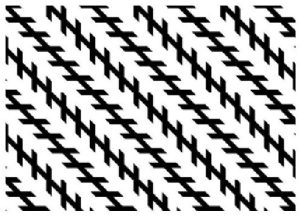 Figure 1: The Zollner Illusion. Source: Kendra, 2020.
Figure 1: The Zollner Illusion. Source: Kendra, 2020.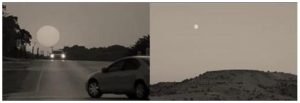 Plate I: The Moon Illusion: Moon in Horizon and Ascended. Source: Sky and Telescope, 2015.
Plate I: The Moon Illusion: Moon in Horizon and Ascended. Source: Sky and Telescope, 2015. Figure 2: The Muller-Lyer Illusion. Source: Kendra, 2020
Figure 2: The Muller-Lyer Illusion. Source: Kendra, 2020